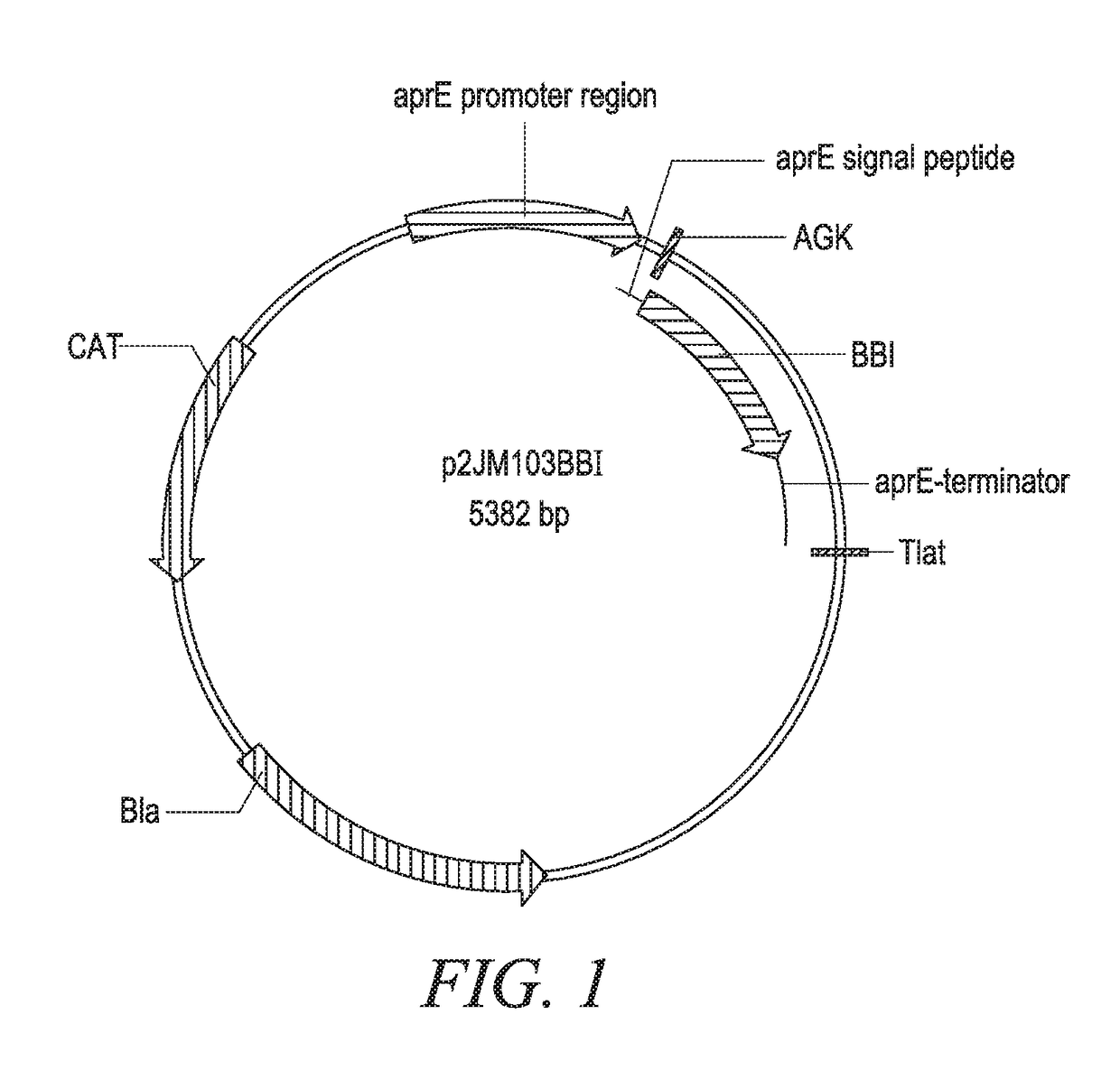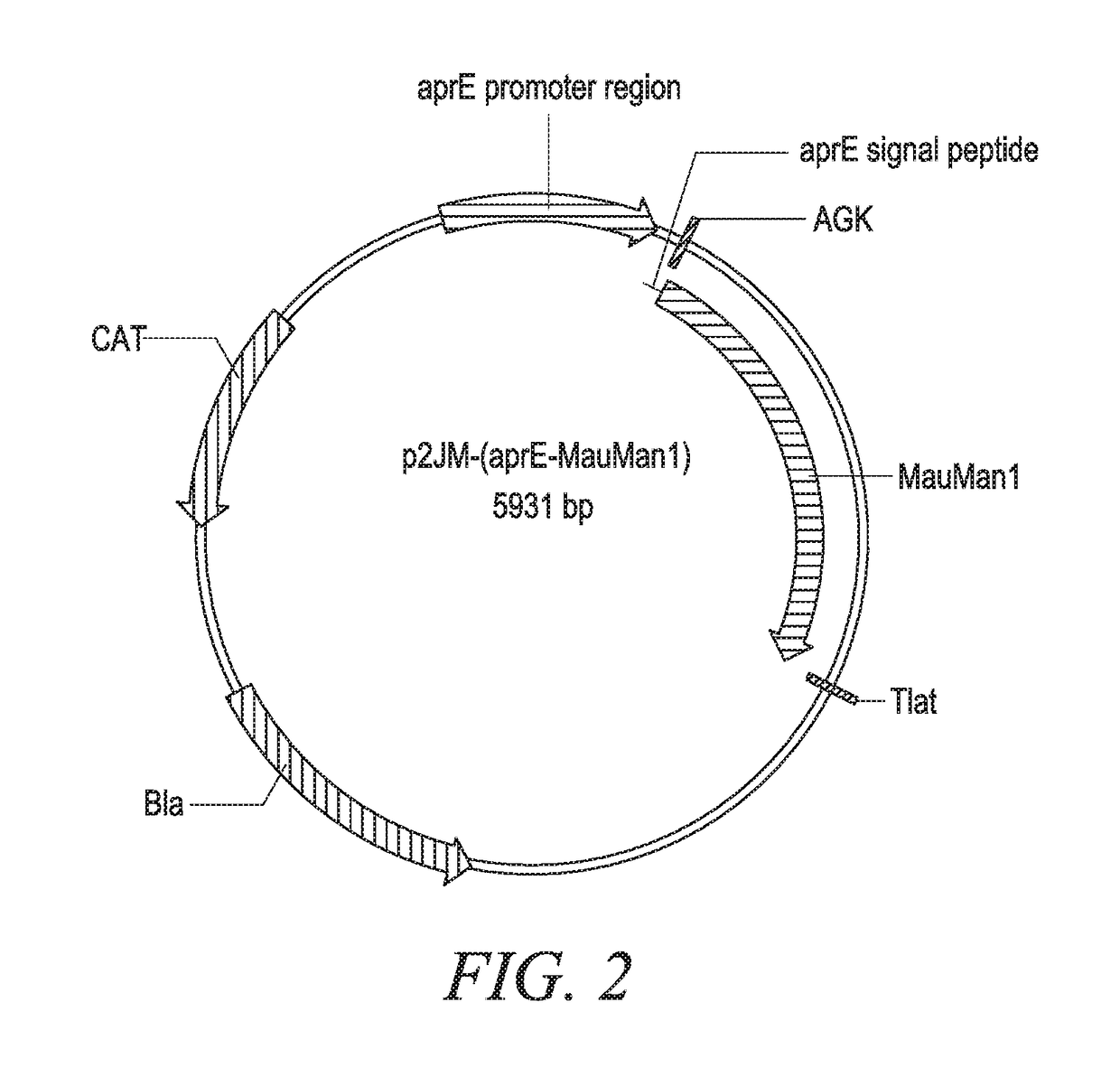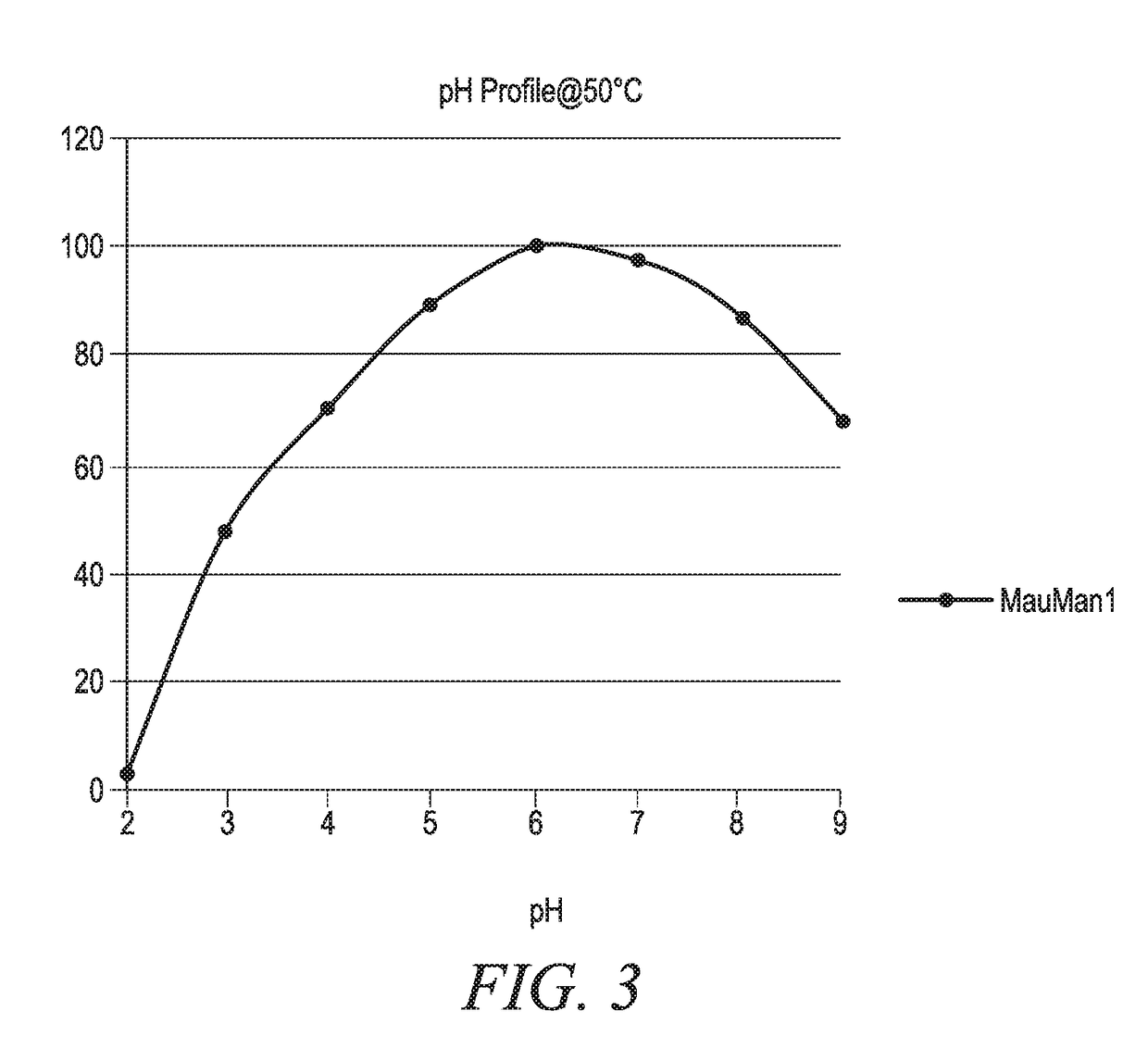Compositions comprising beta mannanase and methods of use
a technology of beta mannanase and beta mannanase, which is applied in the field of beta mannanase, can solve the problems of notoriously difficult hydrolysis of lignocellulosic biomass substrates, especially those from plant sources, and achieve the effects of improving the capacity to hydrolyze, saccharifying, or degrading
- Summary
- Abstract
- Description
- Claims
- Application Information
AI Technical Summary
Benefits of technology
Problems solved by technology
Method used
Image
Examples
example 1
Cloning of Mahella australiensis Glycosyl Hydrolase MauMan1
[0266]Mahella australiensis was selected as a potential source for various glycosyl hydrolases and other enzymes, useful for industrial applications. Genomic DNA for sequencing was obtained by first growing a strain of Mahella australiensis, 50-1 BON on LB agar plates at 30° C. for about 24 hours. Cell material was scraped from the plates and used to prepare genomic DNA using phenol / chloroform extraction. The genomic DNA was used for sequencing, as well as for amplifying the MauMan1 gene for subsequent expression cloning.
[0267]The MauMan1 gene was identified from the genomic sequence. The nucleic acid sequence of this gene comprises the polynucleotide sequence of SEQ ID NO:1, with the nucleic acid residues encoding the predicted native signal peptide in italics:
AATGAAACTAAAGCGGCTCCTTCGATCGCATCTACAGGTATAGATGTGAGCAGTTTAAAAGGGGTTAATCATGCACATACCTGGTATCCAGATAGGCTGGTTCAAGCTCTGCAAGGCATTCAGTCATGGGGAGCCAATTCTGTGAGAGTTGTCTTAAGTAATGGA...
example 2
Expression of Mahella australiensis Beta-Mannanase MauMan1 in a Bacillus subtilis Host
[0271]The DNA sequence encoding mature MauMan1 was synthesized (Generay, Shanghai, P.R. China) with an alternative start codon (GTG) and inserted into a Bacillus subtilis expression vector p2JM103BBI (FIG. 1) (Vogtentanz, Protein Expr. Purif., 55:40-52, 2007). The resulting plasmid was named p2JM-aprE-MauMan1 (FIG. 2). The plasmid contains an aprE promoter, an aprE signal sequence used to direct target protein secretion in B. subtilis, an oligonucleotide encoding peptide Ala-Gly-Lys to facilitate the secretion of the target enzyme MauMan1, and the synthetic nucleotide sequence encoding the mature MauMan1 (SEQ ID NO:3).
[0272]The p2JM-aprE-MauMan1 plasmid (FIG. 2) was then introduced into B. subtilis cells (degUHy32, ΔnprB, Δvpr, Δepr, ΔscoC, ΔwprA, Δmpr, ΔispA, Δbpr) and the thus derived cells were spread on Luria Agar plates supplemented with 5 ppm Chloraphenicol. Colonies were picked and subjected...
example 3
Purification of Beta-Mannanase MauMan1 from a Culture Medium of Bacillus subtilis
[0279]A three-step purification procedure was applied, including an anion exchange, hydrophobic interaction chromatography, and gel filtration. More specifically, about 700 mL crude broth was taken from a shake flask fermentor, concentrated using VIVAfLOW 200 (cutoff 10 kD) and buffer exchanged into 20 mM Tris-HCl, pH 7.5. The broth was then loaded onto a 50-mL Q-Sepharose High Performance column which had been pre-equilibrated with 20 mM Tris-HCl, pH 7.5 (buffer A). An elution step was then carried out using a linear gradient from 0 to 50% buffer B, which was 20 mM HCl, pH 7.5 with 1 M NaCl, using a total of 3 column volumes, followed with another 3 column volumes of 100% buffer B. The protein of interest, MauMan1, was detected in the flow-through fraction.
[0280]A 3 M ammonium sulfate solution was added to the flow-through fraction to an ultimate concentration of 1 M ammonium sulfate. The thus pretrea...
PUM
| Property | Measurement | Unit |
|---|---|---|
| pH | aaaaa | aaaaa |
| temperatures | aaaaa | aaaaa |
| temperatures | aaaaa | aaaaa |
Abstract
Description
Claims
Application Information
 Login to View More
Login to View More - R&D
- Intellectual Property
- Life Sciences
- Materials
- Tech Scout
- Unparalleled Data Quality
- Higher Quality Content
- 60% Fewer Hallucinations
Browse by: Latest US Patents, China's latest patents, Technical Efficacy Thesaurus, Application Domain, Technology Topic, Popular Technical Reports.
© 2025 PatSnap. All rights reserved.Legal|Privacy policy|Modern Slavery Act Transparency Statement|Sitemap|About US| Contact US: help@patsnap.com



